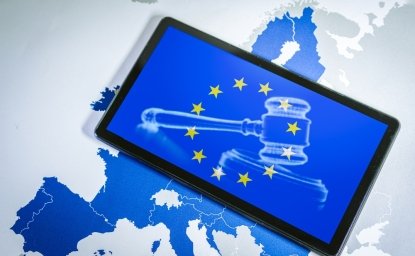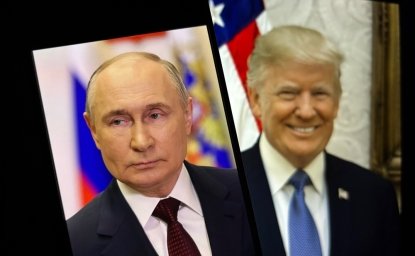216. Language, Identity and Balkan Politics: Struggle for Identity in the Former Yugoslavia

In the former Yugoslavia, language issues have long been both a reflection of inter-ethnic tensions and a catalyst for deepening inter-ethnic animosities. Since the collapse of the Yugoslav Federation in 1991, the insistence that the Serbo-Croatian language be broken up along ethnic lines has at times resulted in what some analysts have considered to be absurd and unnatural consequences. Indeed, given the ethnic polarization in the 1980s and 1990s, language has proven to be a highly emotional and politically sensitive topic. These two decades were characterized by increased competition among the Serbs, Croats, and Muslim Slavs for the populations of ethnically mixed regions. The official concern was for the language rights of ethnic kin residing outside the borders of their home republic. This concern was strongest within Serbian linguistic circles where dialectologists actively engaged in documenting the dialects of Serbs residing in Croatia and Bosnia-Herzegovina. In a similar fashion, Croat linguists became concerned about the dialects of ethnic Croats in the Herzegovina and Posavian regions of Bosnia-Herzegovina.
Since 1991, the three main successor languages to Serbo-Croatian - Bosnian, Croatian, and Serbian - have been carving out their new identities. The Croats have intensified efforts to create a "pure" Croatian, free of all Serbian influences. The Bosnian Muslims have focused their efforts on creating a Bosnian language replete with Turkish and Arabic borrowings, and an insistence on strict pronunciation of the fricative velar consonant h. In Serbia and Montenegro, linguists have hotly debated the future of the Serbian successor language, questioning fundamental issues such as which alphabets should be official, what should be the orthographic rules, and which dialect or dialects should have official status.
Despite efforts on all sides, the establishment of distinct ethno-linguistic identities has been problematic - for all three successor-languages, a nearly identical dialect has been chosen as either the sole official dialect or as an official second dialect. This dialect is known by its linguistic name - the neo-Stokavian Ijekavian dialect - or by its geographical designation - the Southern dialect. This dialect type extends from northwest Montenegro to several parts of Croatia (southern Dalmatia, Slavonia, Baranja, and the Krajina region), most of Bosnia-Herzegovina, and Western Serbia. This same dialect served as the basis for the joint literary language of Serbs and Croats which was adopted by Serb and Croat intellectuals in 1850 through the Vienna "Literary Agreement." After Yugoslavia's breakup, this dialect became the basis for standard Croatian and Bosnian; the Federal Republic of Yugoslavia (FRY) has recognized it as one of two "official" dialects of standard Serbian.
The task of differentiating the languages would have been far simpler if the ethnic groups had chosen to elevate truly separate dialects. Instead, all sides have made rival ownership claims over this Southern dialect. Moreover, the new standard languages have not yet attained stable norms. The Croatian language, which continues to be transformed by new words or newly revived archaic forms, nevertheless appears to be the most stable of the three successor languages. The codifiers of the Bosnian language had to decide whether to pursue a policy of prescriptivism, i.e., an insistence on strict norms for Bosnian, or a policy of tolerance, which would allow for greater linguistic variation. The prescriptivists run the risk of alienating speakers outside the main urban centers that speak local dialects, while the advocates for tolerance have a more difficult task differentiating Bosnian from both Croatian and Serbian. Meanwhile, the Serbian successor language has been the source of the most heated controversies throughout the 1990s. These controversies have had far-reaching political implications, especially given the deepening rift between Montenegro and Serbia.
Within the FRY, three main factions of linguists have emerged: (1) advocates of the status quo, whereby Serbian constitutes a natural outgrowth of the formerly unified Serbo-Croatian language; (2) neo-Vukovite linguists, who seek to deny traditions of the joint language with the Croats, advocate the full return to the traditions of Vuk Karadzic, the nineteenth century reformer of the Serbian language; and (3) extreme nationalists, who seek to discontinue the practice of writing Serbian in both the Cyrillic and Latin alphabets, favoring instead the imposition of an Orthodox Cyrillic script which would include some letters found in the earliest Church Slavonic writings. The status quo linguists - mostly from Novi Sad University and the Serbian Academy of Arts and Sciences - have been favored by the political establishment in Serbia. Their Orthographic Manual, published in 1994, received official approval within Serbia as the authoritative manual to be used in Serbian schools. The neo-Vukovites, including linguists from Belgrade University and the University of Montenegro, are the anti-establishment faction, more closely associated with the Serbian opposition. These linguists claim that the status quo linguists favor the Ekavian speech of Belgrade and Novi Sad, at the expense of other equally "Serbian" dialects. In particular, they purport to be the defenders of the Montenegrins and the "Western Serbs," i.e., those Orthodox Slavs who speak the Stokavian-Ijekavian dialect. The extreme nationalists have been closely identified with Vojislav Seselj and the Serbian Radical Party. These extremists have gained some power recently due to the power-sharing coalition between the Radicals and the Serbian Socialist Party and its allies since 1997. The most influential of these linguists is Radmilo Marojevic, who had a brief tenure as the dean of the Philology Faculty at Belgrade University in 1998-1999.
The language controversies in the Federal Republic of Yugoslavia have also been a source of friction between Montenegro and Serbia. Montenegrin linguists have mostly been aligned with the neo-Vukovite faction and its anti-establishment policies. Many language handbooks, which have disappeared from the shelves in Serbia, can be purchased in Montenegro, and the neo-Vukovite Orthographic Manual has been used at the University of Montenegro. A more radical group of Montenegrin writers and intellectuals have gone so far as to declare a separate Montenegrin language. The main proponent of this Montenegrin language is Vojislav Nikkei, a literature professor at the University of Montenegro. In 1997 he published an Orthographic Manual of the Montenegrin language, and in February 2000 the Montenegrin Philological Society, Matica Crnogorska, officially declared its support for a separate Montenegrin language. Montenegro is now closer than ever to secession from Yugoslavia, and it is possible that an independent Montenegrin state would declare Montenegrin as its official language. Even should reconciliation between the two feuding republics occur, the evolution of a separate Montenegrin language could be unavoidable.
The language-politics interface for the peoples of the former Yugoslavia has been reinvigorated by the outbreak of open conflicts throughout the 1990s. The continued political uncertainty in the Federal Republic of Yugoslavia has produced a particularly volatile linguistic situation. Given the continued crisis between Montenegro and Serbia, further political and linguistic fragmentation in the Balkans can be expected.
Professor Greenberg spoke, together with Professor Victor Friedman and PhD Candidate Burcu Arkan, at an EES seminar entitled "Languages and Ethnicity in the Balkans" on April 11, 2000. The above is a summary of Dr. Greenberg's presentation. Meeting Report #216.
Author

Global Europe Program
The Global Europe Program is focused on Europe’s capabilities, and how it engages on critical global issues. We investigate European approaches to critical global issues. We examine Europe’s relations with Russia and Eurasia, China and the Indo-Pacific, the Middle East and Africa. Our initiatives include “Ukraine in Europe”—an examination of what it will take to make Ukraine’s European future a reality. But we also examine the role of NATO, the European Union and the OSCE, Europe’s energy security, transatlantic trade disputes, and challenges to democracy. The Global Europe Program’s staff, scholars-in-residence, and Global Fellows participate in seminars, policy study groups, and international conferences to provide analytical recommendations to policy makers and the media. Read more

Explore More
Browse Insights & Analysis
360° View of How Southeast Asia Can Attract More FDI in Chips and AI

The Growing Transatlantic “Big Tech” Rift Explained

Mapping Undersea Infrastructure Attacks in the Baltic Sea
